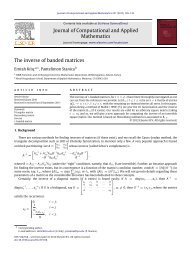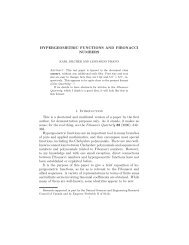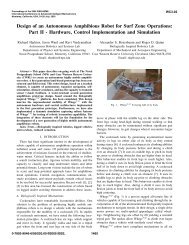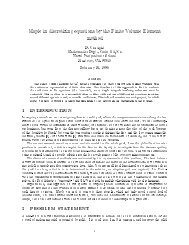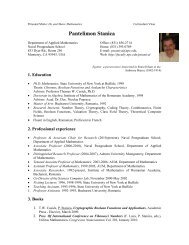A View of Cyberterrorism Five Years Later
A View of Cyberterrorism Five Years Later
A View of Cyberterrorism Five Years Later
Create successful ePaper yourself
Turn your PDF publications into a flip-book with our unique Google optimized e-Paper software.
Justo, 2002). After that, al-Qa‟ida supporters purportedly began using hackers to place their files<br />
in obscure directories <strong>of</strong> other websites (Delio, 2003).<br />
Today, the al-Qa‟ida movement makes extensive use <strong>of</strong> the Web, with an estimated<br />
5,600 sites as <strong>of</strong> January 2008 and 900 more appearing each year (Weimann, 2008). These sites<br />
include static (non-interactive) websites and interactive forums, chat rooms, message boards,<br />
and blogs. Not all <strong>of</strong> these websites play a significant role, however. Internet Haganah identified a<br />
list <strong>of</strong> key sites in 2007, based on the extent to which members <strong>of</strong> the global movement link to the<br />
site and draw content from it. Their top twelve included muslm.net, alfirdaws.org, alhanein.com,<br />
tajdeed.or.uk, al-boraq.com, alhesbah.org, alnusra.net, ikhwan.net, ekhlaas.org, al-faloja.com,<br />
farouqomar.net, and al-ommh.net (Internet Haganah, 2007). Many <strong>of</strong> these were active in 2006<br />
and have remained active in 2008, although exact domain names change.<br />
Jihadist websites are used to distribute a wide variety <strong>of</strong> materials to members,<br />
supporters, potential recruits, adversaries, and the public at large. These include writings and<br />
audio and video recordings <strong>of</strong> Osama bin Laden, Ayman al-Zawahiri, and other al-Qa‟ida leaders<br />
and operatives; horrific videos <strong>of</strong> bombings, beheadings, and other terrorist acts; fatwas (religious<br />
edicts); electronic magazines; training manuals and videos; news reports; calls to join the jihad;<br />
threats to „infidels;‟ and s<strong>of</strong>tware tools. To illustrate, before his death in 2006, Abu Musab al-<br />
Zarqawi, leader <strong>of</strong> the al-Qa‟ida affiliated Islamic State <strong>of</strong> Iraq (ISI), posted gruesome videos <strong>of</strong><br />
ISI‟s deadly terrorist operations on the Internet along with videos to immortalize ISI‟s suicide<br />
bombers (Glasser and Coll, 2005). He started a monthly Internet magazine, <strong>of</strong>fering religious<br />
justifications for jihad and advice on how to conduct it, and posted films <strong>of</strong> his bomb making<br />
classes so that his expertise would not be lost. In summer 2005, ISI averaged nine online<br />
postings per day (Kimmage, 2008). By 2008, however, their postings had dramatically declined,<br />
most likely because <strong>of</strong> the stepped-up efforts against ISI, including the capture or killing <strong>of</strong> 39 ISI<br />
members responsible for producing and disseminating materials on the Internet (Reuters, 2008).<br />
4



